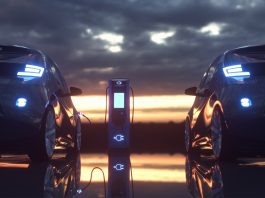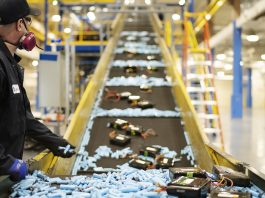The most recent demand report from the Advanced Propulsion Centre has revealed that EV production could be negatively impacted by the lithium supply shortage.
The Advanced Propulsion Centre (APC)’s insight report was launched on 21 June 2022, and it aims to define the challenges facing the automotive industry amid the lithium supply shortage. The next quarterly demand forecast will explore the impact of increasing lithium supply, as well as reducing demand.
The Advanced Propulsion Centre’s most recent demand report has revealed several topics regarding the lithium supply shortage, including:
- 25% of vehicles manufactured in Europe are predicted to have LFP batteries by 2030, reducing reliance on nickel;
- A modest global lithium deficit is likely in 2025, significantly widening by 2030;
- Investment is needed now to scale up the lithium industry, as it takes years to build battery-grade capacity;
- More can be done to reduce demand with the effective use of lithium;
- Call for UK investment to secure future battery material supply chains;
- Opportunity for the UK to capitalise on the anode active material supply gap in Europe; and
- World battery demand for the automotive sector could exceed 2,800 GWh by 2030, more than double the forecast for 2025.
As the ownership of battery EVs rises, production alternatives are required
With ownership of battery electric vehicles (BEVs) on the rise, European original equipment manufacturers (OEMs) are aware of the requirement to search for alternatives and are aiming to reduce their reliance on nickel and cobalt in battery production. The latest forecast from the APC predicts that 25% of all installed battery capacity in European-manufactured vehicles will be lithium iron phosphate (LFP) or derivatives thereof.
Additionally, the findings from the most recent APC quarterly demand forecast also emphasise the impending lithium shortage, which could delay global efforts to manufacture enough BEVs to meet anticipated consumer demand in 2030. The most recent APC projections demonstrate that the global lithium deficit in 2030 could reveal the anticipated manufacture of 40 million BEVs reduced to just 25 million in that constrained scenario.
Using LFP in car batteries: Becoming a global preference
The use of LFP in car batteries has historically been favoured by manufacturers in China. Adoption outside of China was limited due to the various IP arrangements and perceived higher energy density of NMC cells. However, recent improvements in the energy density of LFP batteries, as well as potential superior safety, cost reduction, cycle life, and reduced material supply concerns, have resulted in many OEMs revisiting their battery strategies.
Thus, several leading vehicle manufacturers have either expressed their intent or communicated interest in introducing LFP batteries. Tesla has been a first-mover on this with approximately 50% of their global vehicle deliveries in Q1 2022 being LFP variants.
European OEMs, such as Volkswagen, producing entry-level segment vehicles will likely lead the charge in LFP adoption across the region. However higher performance segments, such as large vans and sedans, could also see a modest interest in LFP, especially where battery durability is important. A wide spectrum of other OEMs, from new start-ups, such as Rivian to established OEMs like Ford, have now pledged to utilise LFP batteries in larger vehicle models.
The importance of meeting the demand for BEV production
Irrespective of the proportions of LFP, NMC or other chemistries adopted globally, battery-grade lithium will still be in demand in vast quantities. “The lithium industry is still relatively small compared to other technology metals, and we understand the challenges this industry faces in scaling up to meet the demands of BEV production over the coming years,” explained Julian Hetherington, Automotive Transformation Director at APC.
“The UK government and industry are rightly investing in building Gigafactories to not only secure vehicle assembly, but also energise a UK supply base for high-value components like cathodes and anodes. However, we also recognise the importance of securing stable material supply chains. That’s why the APC has supported UK feasibility study projects exploring lithium extraction and refining via our Automotive Transformation Fund.”
Investing in supply is only one side of the lithium equation
“In the face of a future lithium squeeze, the industry needs further investments to increase the supply of lithium chemicals and enact measures that reduce our demand for it,” noted Luke Bates, Automotive Analyst at APC.
“We cannot rely solely on supply-side measures to increase the primary supply of battery-grade lithium or think recycling is a silver bullet. Using smaller or modular batteries, introducing sodium-ion in entry-level vehicles, and adopting fuel cells for larger, heavier vehicles are all potential pathways we could explore.”
Other important data and conclusions in the latest quarterly demand forecast include:
- Work needs to continue to localise UK supply chains enabling OEMs to export EVs tariff-free; and
- Limited availability of anode active material in Europe is likely to draw in big investments to localise supply.
What is APC?
The APC is an organisation tasked by the UK government and automotive industry to accelerate the transition to low-carbon transport solutions. It utilises their unique insight, gained from working closely with the global automotive industry, in order to provide insight and forecasting to support the government. This includes creating strategic policy decisions and also providing clarity to the industry about the projected demand, product, and technology roadmaps.
The Q1 2022 Automotive industry demand report is now live and available to read.









